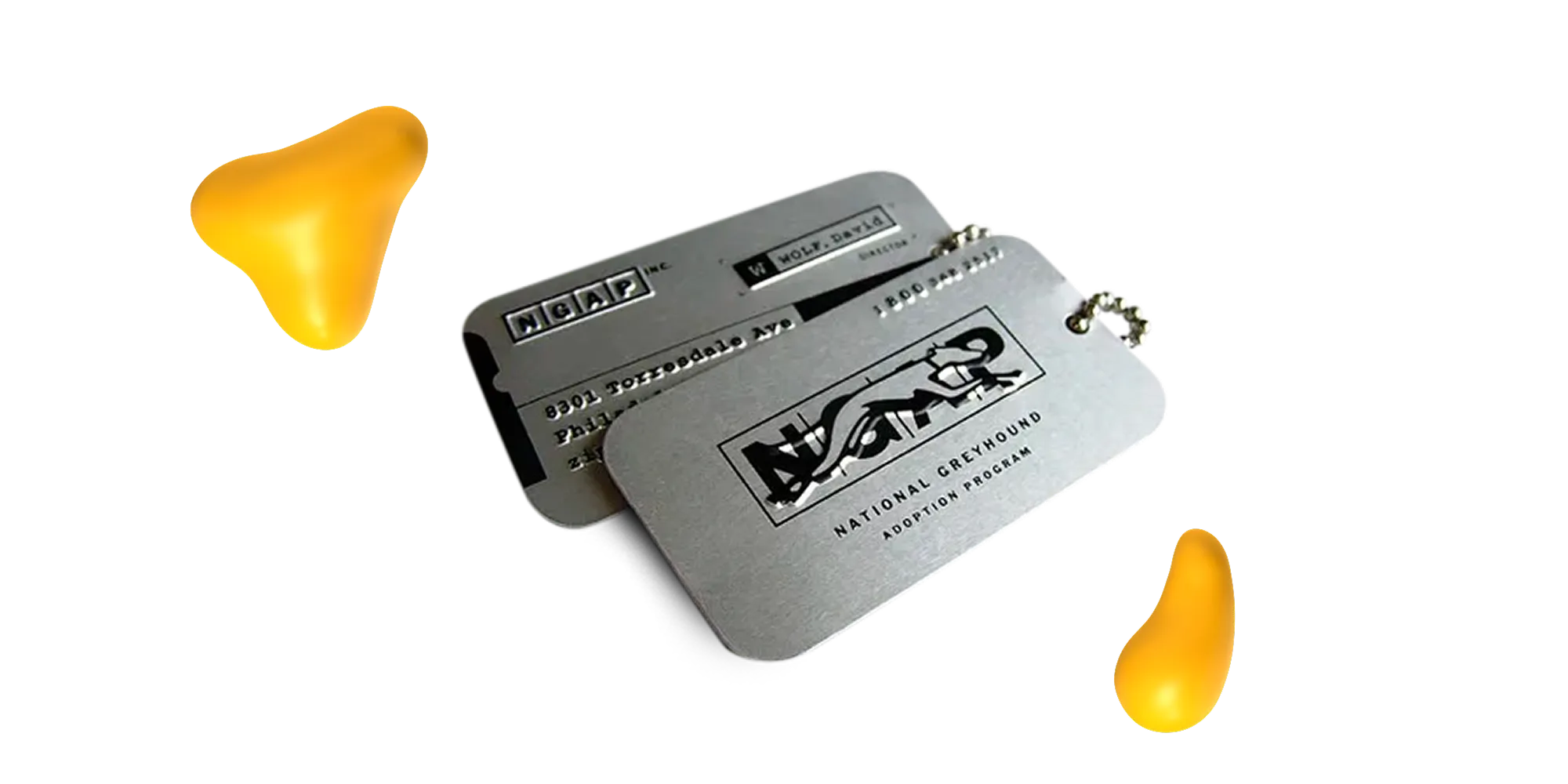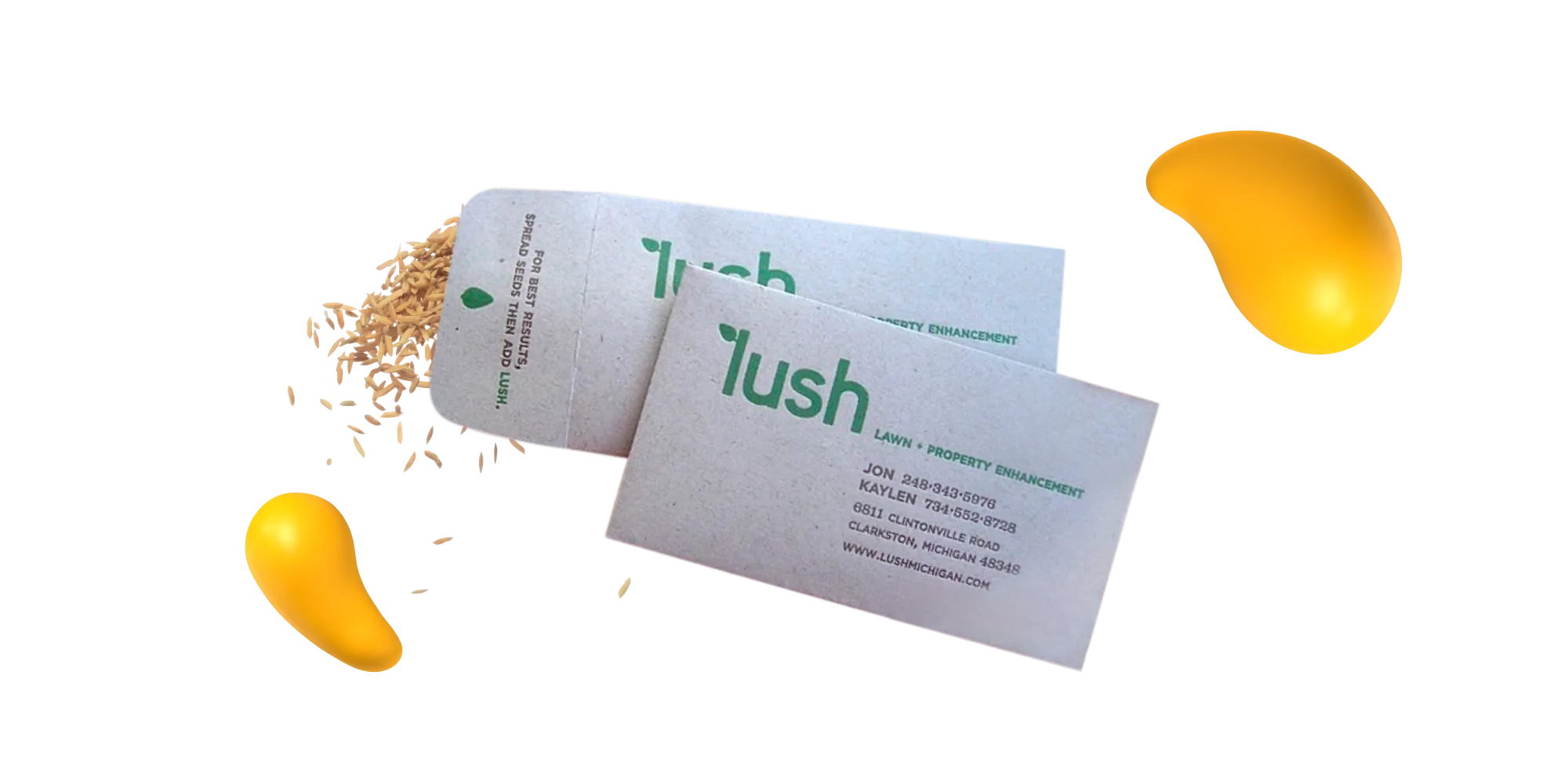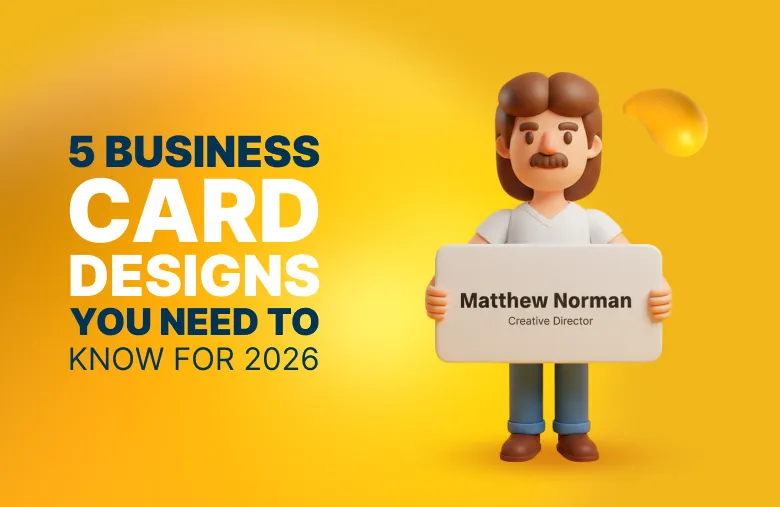Let’s be honest: most business cards are landfill fodder.
A limp rectangle, recycled stock, maybe a polite sans serif — instantly forgotten, instantly discarded.
But 2025 has changed the game.
We’re in the middle of an AI-driven design boom, and nothing feels more radical right now than tactile weirdness.
What do we mean?
The business card has mutated into a performance piece, a joke, sometimes even a dare.
If you’re still passing out polite 3.5x2s with embossed Helvetica, you might as well hand people a sticky note that says: “I play it safe.”
This year and beyond, the cards that matter are the ones that misbehave, and these five designs prove it.
Keep Exploring:
- If you want a refresher, here’s a guide on how to create business cards that impress.
- Or, leave it the pros and check out the 10 best print design agencies for awesome business cards and more.
5 Rule-Breaking Business Card Designs for 2025 and Beyond
So, what does “rule-breaking” actually look like in print?
Here are five designs redefining what a business card can be, and why they work:
1. The Card That Isn’t a Card
If your “business card” looks suspiciously like a coaster, a keychain, or a miniature poster torn from a zine, you’re doing it right.
People remember objects, not rectangles. Think:
- A silkscreened matchbox with your URL
- A fabric swatch embroidered with your name
- A candy wrapper with your QR code hidden inside
These aren’t business cards anymore; they’re keepsakes. And of course, they don’t get shoved in a wallet; they get kept, displayed, and maybe even Instagrammed.
Example:
Bon Vivant Cheese Shop, Brazil — this business card doubles as a functional mini cheese grater, turning branding into an experience you can literally feel (and use).
Designed by JWT Brazil, it’s proof that the best “cards” don’t just represent your brand, they embody it.

2. The Joke Card
Why so serious?
In 2025, self-serious design is a disease. Fortunately, you can cure it with humor.
Business cards that double as memes, deadpan one-liners, or fake coupons are making the rounds at networking events.
Someone hands you a card that just says: “Don’t call me, just Google me” in 72pt Comic Sans — you remember that person.
Irony is currency, and in 2025, a little sarcasm leaves a deeper impression than any debossed serif.
Example:
Designed by Marko Stanzl, this clever business card transforms into a tiny paper character with colorful “hair.”
It’s playful, unexpected, and instantly memorable, turning a simple contact exchange into a moment of delight. A perfect example of humor and design working hand in hand.

3. The Disposable, Indestructible Card
Paradox is in.
Some designers are leaning into cards printed on thin newsprint. They’re intentionally flimsy, designed to crumple after one use.
They’re a quiet reminder that not all design is meant to last.
Conversely, some designers take the opposite approach: metal plates, etched acrylic, even slabs of recycled tile.
One whispers impermanence; the other, endurance. Both get remembered because they defy the unspoken rule that business cards should be “neutral.”
Example:
Designed for the National Greyhound Adoption Program, this stainless steel business card doubles as a dog tag — a clever nod to its cause and a masterclass in durability.
It’s the perfect example of the “indestructible card” trend redefining 2025 design.

4. The Living Card
Some business cards don’t just exist… they react. They grow, glow, or change right before your eyes.
What the heck do we mean?
Think embedded seeds that sprout if you plant the card, thermochromic ink that shifts color with body heat, or a design that only reveals your details in sunlight.
These aren’t gimmicks; they’re tiny experiments in connection. They make the receiver pause, tilt their head, and engage.
When a card responds to touch, warmth, or light, it transforms from a static object into a moment of curiosity. Because in a sea of flat, forgettable rectangles, a card that moves… moves you.
Example: Created by Struck Creative for Lush Lawn & Property Enhancement, this card quite literally grows the brand.
Each card comes filled with grass seeds and a cheeky instruction: “For best results, spread seeds then add Lush.”

5. The Card You Can Feel
In 2025, the business card isn’t just read; it’s felt.
Designers are pushing past visuals and into texture, playing with braille, embossed grids, velvet flocking, even sandpaper to spark a gut reaction.
A raised dot pattern makes people stop, touch, and wonder. Even if they can’t read braille, the disruption works; curiosity becomes memory.
Some cards beg to be toyed with — torn, scratched, or tucked into a pocket for someone to fidget with later. They’re small sensory rebellions against the flatness of digital life.
And they’re provocative too:
Is using braille as texture an act of awareness or appropriation?
That question alone gets people talking.
And that’s the point. In a sea of glossy rectangles, texture lingers. Long after the name fades, the feeling stays on your fingertips.
Example:
Designed by Studio Fabio Milito Design for MODhair, a rock-themed salon in Rome, this business card doubles as a mini comb and even plays a rock riff when you run your fingernail across it.
It’s tactile, clever, and totally on-brand, transforming a simple handout into an experience you can feel and hear.

Play Your Cards Right — Choose Designity
In a world of AI portfolios and templated design, the ones that matter make you pause.
They break rules, take risks, and refuse to blend in!
At Designity, a Creative-as-a Service platform, we help brands do exactly that and more.
Our top 3% of vetted creatives and Creative Directors turn bold ideas into design that feels alive, from unforgettable business cards to full brand identities.
Because the best designs don’t just look good; they leave an impression.
And forgettable? That’s never in the brief.
Book a demo call today to get a 2-week trial (no upfront payment) to experience Designity’s 100+ creative services.


